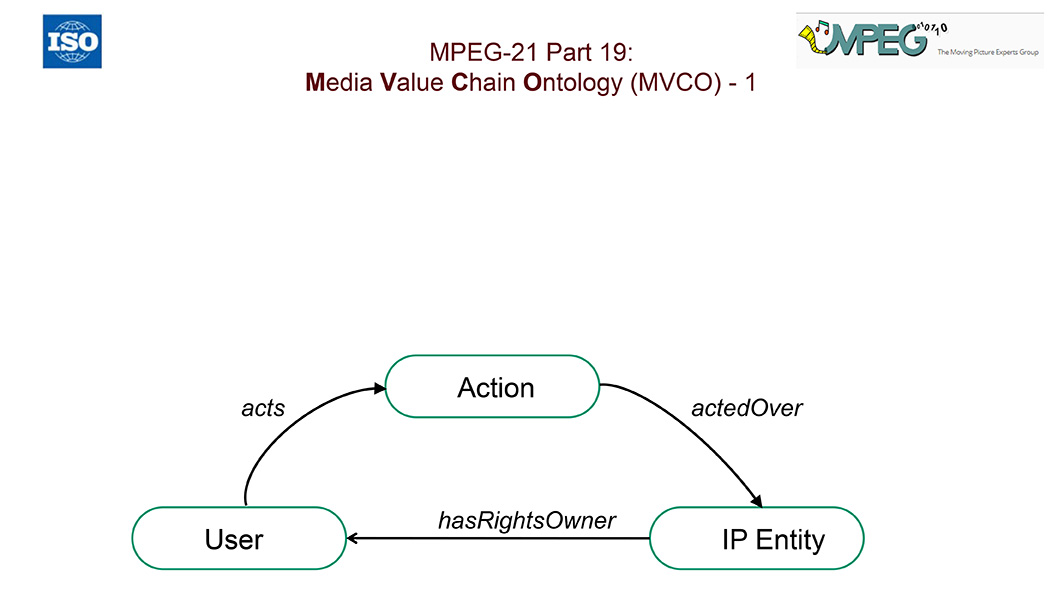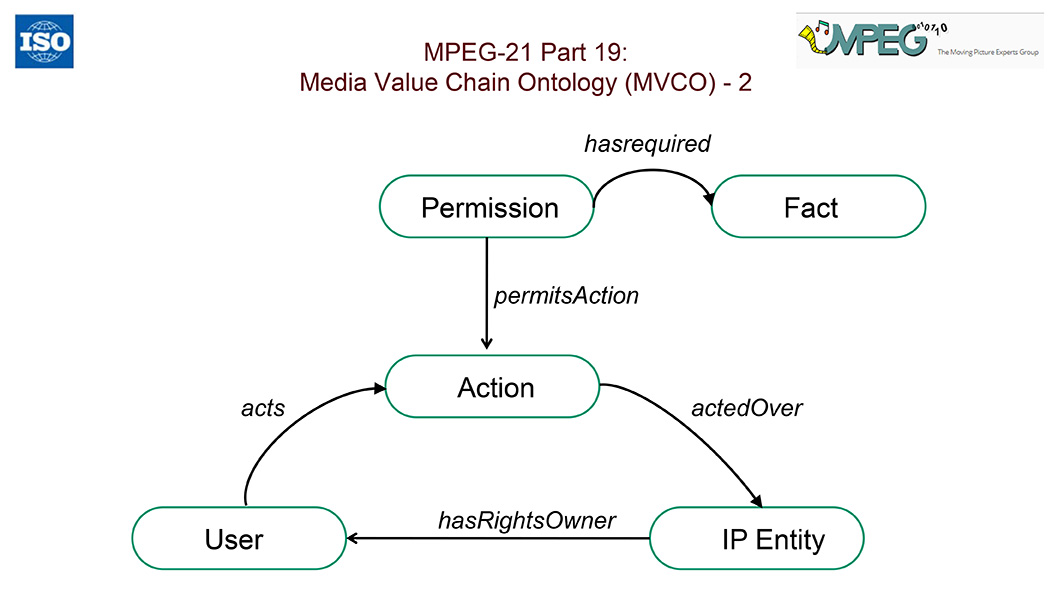MPEG-21 Media Value Chain Ontology (MVCO) may be used to capture « knowledge » about media value chains and to represent it in a computer readable way, concepts in the domain and the relationships between those concepts.
ISO/IEC 21000-19:2010 describes the following technology.
- Model: a narrative description of the Value Chain, its main elements and relations.
- Representation: the MVCO has been formalised as a normative OWL Ontology, and the description which consists of listing the Classes, the object properties, the datatype properties, and the Class individuals. Classes are described by giving the name, an English definition, the Class hierarchy, and the restrictions imposed on the Class.
- Ontology use
ISO/IEC IS 21000-19 represents in a standard way the Intellectual Property (IP) along the Value Chain, by means of different kinds of Intellectual Property entities, Actions and User roles. In this context, there are different types of objects, also called IP Entities(Work, Adaptation, Manifestation, Instance, Copy, Product), and different actionsthat are performed on them (CreateWork, MakeAdaptation, MakeManifestation, MakeInstance, MakeCopy, Produce, Distribute, EndUserAction), and different users that can perform these actions according to their roles(Creator, Adaptor, Instantiator, Producer, Distributor, EndUser).
MVCO defines the relationships among Users, IP Entities and Actions as depicted in Figure 1. In this figure, the round boxes represent classes, and the arrows object properties (heading from domain class to range class).

Figure 1: MVCO model – “Relationships” entre “User”, “Action” and “IPEntity”
In the MVCO ontology, permissions represent the transfers of rights. A Permissionrelates an IP Entitywith the transmitted right, the original and the new rights owners. Figure 2 shows the Permission model in MVCO:

Figure 2: MVCO : Modèle “Permission”
A Permission may require the prior fulfilment of conditions, and these conditions are represented as Facts. These Facts are general statements with a binary truth value, describing any constraint related to the context or the users.
